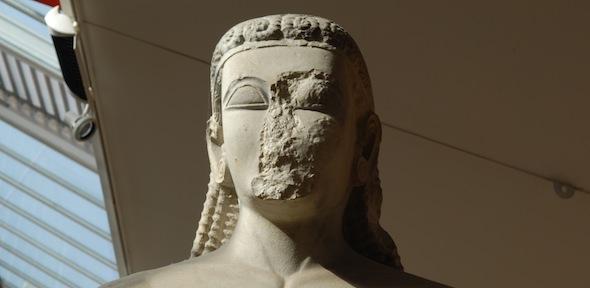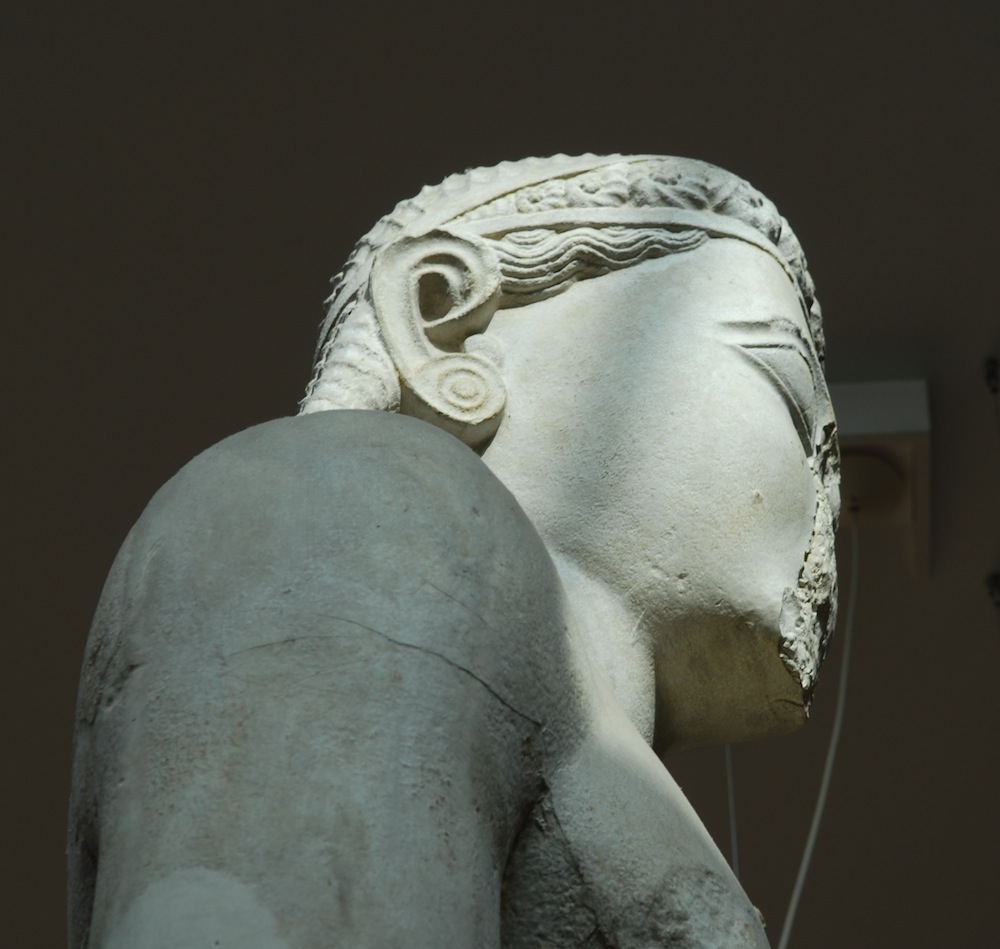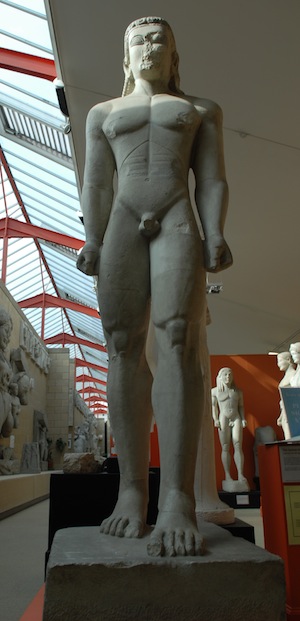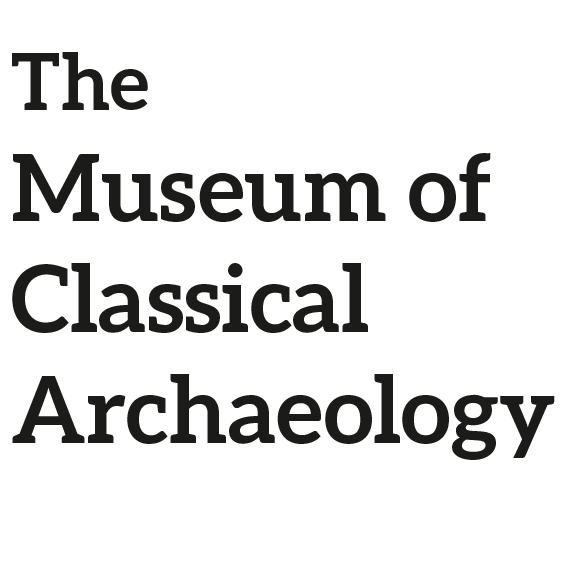
The so-called Sounion Kouros, dated to around 580 BCE, is the first statue that a visitor sees upon entering the Cambridge Museum of Classical Archaeology. Its colossal size is one of its most imposing features – it towers over the visitor at 3.05 metres, or 10 feet – and its rigid stance is another. It often makes visitors stop and stare.
The name kouros isn't a title any ancient Greek viewer would have given to this statue; instead, it's simply the ancient Greek word for 'male youth' or 'young man'. Kouroi are an extremely uniform style of early Greek sculpture: they always stand with one foot in front of the other and with fists clenched at their sides, and they are always naked. In contrast, their female equivalents – korai (singular kore), ancient Greek for 'young women' – are always clothed, often in elaborately draped dress. The Sounion Kouros is one of the earliest examples of the kouros-type, which is why it stands at the front.
And yet, this isn't the sort of statue that normally springs to mind when we think of ancient Greek art. In fact, its stance and execution have seemed to some viewers more Egyptian than Greek, while others think it resembles the sorts of sculptures made by Modern artists in the twentieth century. Unlike many later Greek statues, the Sounion Kouros has a highly stylised image: look, for example, at the ears, shaped almost like the capitals of Ionic columns, the large almond eyes, or the perfectly symmetrical torso.

What seems to have been more important to the artist of the Sounion Kouros is the attempt to convey an ideal of the human form – one that subscribes to a number of stylised and formal patterns, rather than its real-life, physical or natural appearance. That interest in pattern and symmetry is characteristic of Archaic sculpture, although it gives way to the apparent attempt to imitate the natural form of the human body during the course of the sixth century BCE.
Find the Sounion Kouros in Bay A
View the Sounion Kouros in the online catalogue
Further Reading
- R. Osborne 1998, Archaic and Classical Greek Art (Oxford University Press): 75-85
- N. Spivey 1997, Greek Art (Phaidon): 103-168
- S. Woodford 1988, An Introduction to Greek Art (Cornell University Press): 38-56








